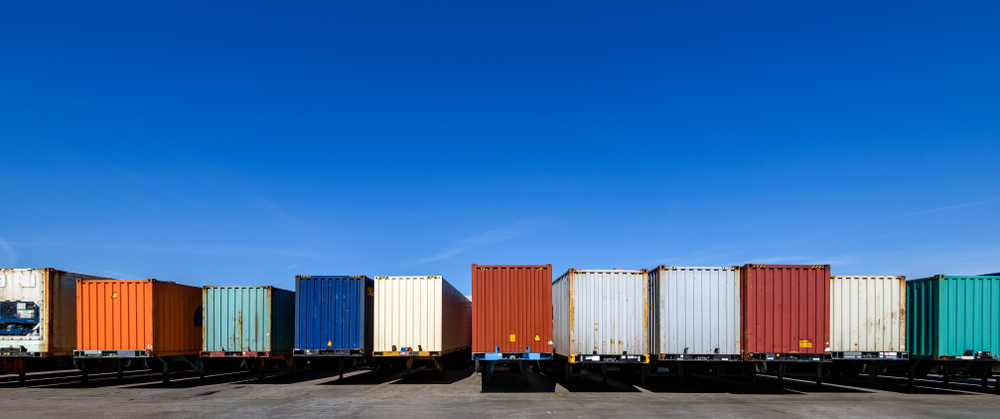The Complete Guide to
Moving LTL Freight Efficiently in 2023
- Chapter I: Introduction
- Chapter II: The Challenges of Moving Inland Freight to Mexico
- Chapter III: Innovative Technology Solutions for Cross-Border Freight Management
- Chapter IV: How Cargobot Pool Can Help Build More Efficient Shipping to Mexico
- Chapter V: Accelerate Your Efficiency When Shipping to Mexico With Cargobot Pool
Introduction

As we rapidly approach the end of 2023, the transportation logistics world is buzzing with a term you've likely heard before: LTL freight.
LTL, or Less Than Truckload, is becoming an indispensable part of logistics strategies for businesses across the board, big or small. With its flexibility and cost-effectiveness, it's no wonder that this shipping solution is taking center stage.
The way we move goods is changing, and if you're not on board with LTL as an effective load movement option, you risk being left behind.
But don't fret just yet; we're here to guide you through everything you need to know to move your LTL freight efficiently in the fast-paced business landscape of 2023.
Trust us, and you'll want to stick around for this.
Why LTL Freight is Critical for Your Business in 2023
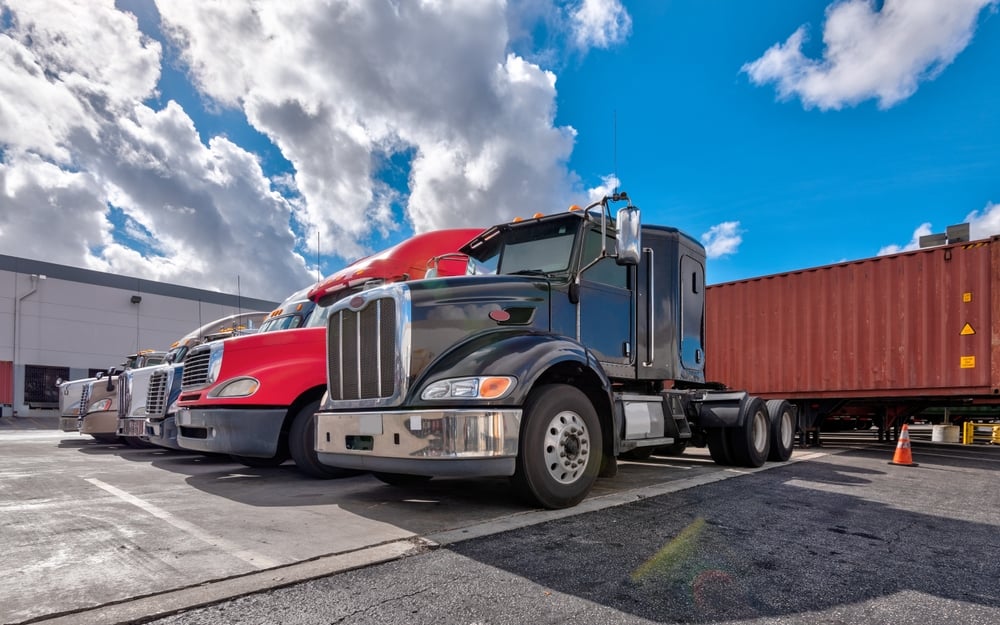
In today's competitive business landscape, efficient and reliable shipping solutions are crucial for the success of any organization. The LTL market is projected to grow at a CAGR of 4.5% from 2021 to 2028.
As we venture into 2023, the significance of LTL (Less Than Truckload) freight has never been more apparent. Let's explore why LTL freight is critical for your business this year and beyond.
1) Cost Savings and Resource Optimization
One of the primary reasons why LTL freight is critical for businesses in 2023 is the cost savings it offers.
By consolidating shipments from multiple customers into a single truck, LTL freight allows businesses to share transportation costs.
This shared resource model enables companies to significantly reduce their shipping expenses compared to traditional Full Truckload (FTL) shipping, where they bear the full cost of the entire truck, regardless of shipment size.
2) Flexibility and Scalability
In today's dynamic market, businesses need shipping solutions that can adapt to changing shipping volumes and schedules. LTL freight provides the flexibility and scalability required to meet these demands.
Unlike FTL shipping, LTL carriers offer frequent pickup and delivery options, allowing businesses to align their shipping operations with customer needs.
This flexibility enables businesses to efficiently manage varying shipping volumes and respond promptly to customer demands without incurring excessive costs.
3) Enhanced Service Quality and Reduced Risk
LTL freight is known for its superior service quality and reduced risk compared to other shipping methods. The average LTL shipment size is 1-6 pallets. LTL carriers specialize in handling smaller-sized shipments, ensuring careful handling and tracking of each individual package.
This attention to detail minimizes the risk of damage or loss during transit, giving businesses peace of mind and maintaining the integrity of their products.
Additionally, LTL carriers often provide value-added services such as shipment tracking, insurance options, and delivery notifications.
These services enhance visibility and transparency throughout the shipping process, enabling businesses and their customers to stay informed about their shipments' status and estimated arrival time.
4) Network Reach and Accessibility
LTL carriers operate extensive transportation networks across cities, regions, and countries. This expansive network reach makes LTL freight easily accessible to businesses of all sizes, regardless of location.
Whether you are a small e-commerce business or a larger enterprise, LTL freight offers a comprehensive and cost-effective shipping solution that can cater to your needs.
Furthermore, the accessibility of LTL freight networks opens up new business market opportunities. It allows them to expand their customer base by reaching consumers in different regions without the logistical complexities and high costs associated with establishing their transportation infrastructure.
5) Sustainable and Environmentally Friendly
In an era where sustainability is a growing concern, LTL freight offers environmental benefits compared to individual shipments. By consolidating multiple shipments into a single truck, LTL freight reduces the number of vehicles on the road, decreasing fuel consumption and greenhouse gas emissions.
Embracing LTL freight as a primary shipping method aligns with the sustainability goals of businesses, contributing to a greener and more eco-friendly supply chain.
The Key Takeaway
LTL freight plays a critical role in the success of businesses in 2023. Its cost savings, flexibility, enhanced service quality, extensive network reach, and environmental benefits make it a preferred choice for organizations seeking efficient and reliable shipping solutions.
By embracing LTL freight, businesses can optimize their shipping operations, reduce costs, enhance customer satisfaction, and position themselves for growth in a competitive market.
The Advantages of LTL Freight over FTL Shipping
Regarding shipping goods, businesses have two primary options: Less Than Truckload (LTL) freight and Full Truckload (FTL) shipping.
While both methods have their merits, LTL freight offers several distinct advantages, making it a preferred choice for many businesses. Let's explore the advantages of LTL freight over FTL shipping and why it can be a game-changer for your logistics operations.
1) Cost Savings and Resource Optimization
One of the significant advantages of LTL freight is the cost savings it offers. With FTL shipping, businesses must book and pay for an entire truck, regardless of the size.
In contrast, LTL freight consolidates multiple customer shipments into a single truck. This shared resource model significantly reduces transportation costs, as businesses only pay for the space their loads occupy. By optimizing truck capacity and sharing expenses, LTL freight enables companies to save money and allocate resources more efficiently.
2) Flexibility and Scalability
LTL freight provides businesses the flexibility and scalability they need in today's fast-paced market. Unlike FTL shipping, which requires filling an entire truck, LTL freight allows companies to ship smaller quantities of goods.
This flexibility is particularly beneficial for businesses with varying shipping volumes or those that experience fluctuations in demand. With LTL freight, companies can ship what they need when needed without being tied to the constraints of a full truckload.
Moreover, LTL carriers offer regular pickup and delivery options, accommodating businesses with different shipping schedules. This flexibility allows companies to align their shipping operations with customer demands, ensuring timely deliveries and customer satisfaction.
3) Reduced Risk and Enhanced Service Quality
LTL freight offers reduced risk compared to FTL shipping. Since LTL carriers specialize in handling smaller-sized shipments, they pay meticulous attention to each individual package.
From careful handling during loading and unloading to advanced tracking systems, LTL carriers prioritize the protection and security of shipments.
This reduces the risk of damage or loss during transit, giving businesses peace of mind and ensuring the integrity of their products.
Furthermore, LTL carriers often provide value-added services that enhance service quality. These services may include shipment tracking, delivery notifications, and insurance options.
Tracking shipments and receiving real-time updates increases transparency and allows businesses to manage their logistics operations proactively. It also provides customers with visibility into the status of their shipments, improving overall satisfaction and trust.
4) Access to Additional Services and Expertise
LTL freight often opens doors to a wide range of additional services and expertise that can benefit businesses.
LTL carriers have extensive networks and established relationships with various transportation partners, enabling them to offer value-added services such as warehousing, distribution, and even international shipping.
By leveraging these services, businesses can tap into new markets, expand their customer base, and streamline their supply chain.
LTL carriers also bring valuable expertise in logistics and shipping. They possess in-depth knowledge of regulations, shipping routes, and best practices.
By partnering with an experienced LTL carrier, businesses can access this expertise and benefit from their guidance on optimizing shipping processes, selecting appropriate packaging, and navigating the complexities of logistics.
Key Takeaway
LTL freight offers distinct advantages over FTL shipping, making it an attractive business option.
The cost savings, flexibility, reduced risk, enhanced service quality, and access to additional services and expertise make LTL freight a compelling choice for businesses seeking efficient and cost-effective shipping solutions.
By embracing LTL freight, businesses can optimize their logistics operations, reduce expenses, and gain a competitive edge in today's dynamic marketplace.
Supporting Content
The Essential Factors to Consider When Shipping LTL Freight
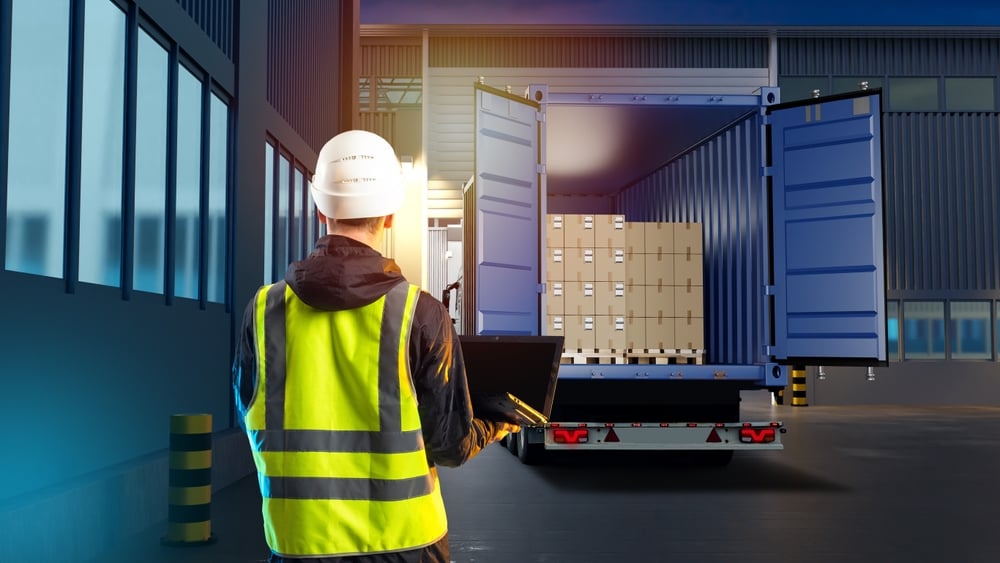
Shipping LTL (Less Than Truckload) freight involves a unique set of considerations compared to other shipping methods. To ensure a smooth and successful LTL freight experience, it's crucial to consider certain essential factors.
Let's explore the key considerations you should take into account when shipping LTL freight.
1) Packaging and Palletization
Proper packaging and palletization are critical when shipping LTL freight. Since LTL shipments share space with other shipments in the same truck, it's essential to ensure that your goods are securely packaged and palletized to withstand the rigors of transportation.
Use sturdy packaging materials and consider reinforcing fragile items with additional cushioning. Stack and secure items on pallets, using a stretch wrap or banding to prevent shifting or damage during transit.
Investing in high-quality packaging materials and pallets will help protect your goods and minimize the risk of damage.
2) Accurate Weight and Dimensions
Accurate weight and dimensions are crucial for pricing and capacity planning in LTL shipping. LTL carriers use the weight and dimensions of your shipment to determine freight charges and allocate space in their trucks.
It's essential to accurately weigh and measure your shipment using certified scales and measuring tools.
Providing precise information to the carrier helps prevent discrepancies, re-weighs, and reclassifications that can result in additional costs or delays.
Remember to include the weight and dimensions of any packaging materials or pallets when calculating your shipment's total weight and size.
3) Freight Classifications
Understanding and accurately classifying your LTL freight is vital for pricing, liability, and regulatory compliance. LTL shipments are classified according to the National Motor Freight Classification (NMFC) system, which assigns a freight class based on density, storability, handling, and liability.
Consult the NMFC guidelines and work closely with your carrier to determine the correct freight class for your shipment.
Accurate classification ensures your shipment is priced correctly and avoids potential issues during transit or when filing claims.
4) Transit Time and Service Levels
Consider the transit time and service levels different LTL carriers offer when choosing a shipping provider. Transit time refers to the duration it takes for your shipment to reach its destination.
Evaluate carriers based on their estimated transit times and ensure they align with your customer's expectations.
Additionally, consider the service levels carriers offer, such as guaranteed delivery dates, expedited shipping options, or value-added services.
Understanding the transit time and service levels will help you select the suitable carrier to meet your specific shipping requirements.
5) Tracking and Shipment Visibility
Visibility into the status and location of your LTL shipments is crucial for effective logistics management. Look for LTL carriers that provide robust tracking systems and real-time shipment visibility.
This allows you to monitor your shipments, provide accurate customer updates, and proactively address potential delays or issues. Consider carriers that offer online portals, mobile apps, or automated notifications to keep you informed about the progress of your shipments.
A Note About Carrier Reputation and Reliability
When shipping LTL freight, partnering with a reputable and reliable carrier is essential. Research the reputation and track record of different LTL carriers regarding on-time delivery, customer service, and handling of claims.
Assess their credibility by looking for carrier reviews, testimonials, and industry certifications. A reliable carrier ensures that your shipments are handled with care, delivered on time, and provides prompt support in case of any issues or questions.
Key Takeaway
By considering these essential factors when shipping LTL freight, you can ensure a smooth and efficient shipping process.
Paying attention to packaging, accurate weight and dimensions, freight classifications, transit time, tracking capabilities, and carrier reputation will help you make informed decisions and optimize your LTL shipping operations.
Supporting Content
Expert Tips for Maximizing Your LTL Freight Efficiency
Efficiency is crucial to LTL (Less Than Truckload) freight shipping. By optimizing your LTL freight operations, you can reduce costs, improve delivery times, and enhance overall logistics performance.
Read on as we share expert tips to help you maximize your LTL freight efficiency and streamline your shipping processes.
1) Consolidation and Volume Discounts
Consolidation is a key strategy for optimizing LTL freight efficiency. Whenever possible, consolidate multiple smaller shipments into larger ones. By combining shipments, you can take advantage of volume discounts offered by LTL carriers.
Consolidation reduces the number of individual shipments, optimizing truck capacity and decreasing transportation costs.
Work closely with your logistics team or 3PL provider to identify opportunities for consolidation and leverage volume discounts to your advantage.
2) Efficient Loading and Unloading Processes
Efficient loading and unloading processes are critical for LTL freight efficiency. Proper organization and labeling of shipments can significantly speed up the loading and unloading times.
Ensure shipments are palletized and marked with labels indicating their contents, destination, and handling instructions.
This helps LTL carriers and dockworkers easily handle your shipments, minimizing delays and improving efficiency. Utilize barcode scanning or RFID (Radio Frequency Identification) technology to enhance accuracy and speed during the loading and unloading processes.
3) Collaboration with Carriers
Establishing strong relationships and collaboration with LTL carriers is key to maximizing efficiency. Regularly communicate with your carriers to understand their capabilities, requirements, and service offerings.
Share your shipping needs and volumes to help carriers optimize their routes and schedules. Collaborating with carriers allows you to leverage their expertise in logistics and gain insights into industry best practices.
By working together, you can identify areas for improvement, explore cost-saving opportunities, and streamline your LTL freight operations.
4) Utilize Technology and Automation
Leveraging technology and automation can significantly enhance LTL freight efficiency. Consider implementing Transportation Management Systems (TMS) or freight management software to streamline and automate your shipping processes.
These systems help you consolidate shipments, manage carrier relationships, track shipments, generate shipping documents, and analyze data for continuous improvement.
Additionally, real-time tracking and visibility tools enable you to proactively manage your shipments, provide accurate updates to customers, and address any issues promptly.
5) Optimize Packaging and Use Standard Sizes
Proper packaging optimization can lead to significant efficiency gains in LTL freight. Use standard packaging sizes compatible with LTL carriers' handling equipment when possible.
Standard sizes minimize the need for additional handling and reduce the risk of reclassifications or dimensional weight charges.
Optimize packaging dimensions to maximize the use of space within trailers while ensuring the safety of your goods. Efficient packaging improves space utilization and reduces the likelihood of damage during transit.
6) Evaluate Carrier Performance and Service Levels
Regularly assess your LTL carriers' performance and service levels to ensure ongoing efficiency. Monitor metrics such as on-time delivery, claims ratio, and customer satisfaction.
Evaluate carriers based on their ability to meet your shipping requirements consistently. Consider conducting periodic carrier reviews or performance evaluations to identify areas for improvement and address any concerns.
Maintaining a strong relationship with reliable carriers ensures that your shipments are handled efficiently and delivered on time.
By implementing these expert tips, you can maximize your LTL freight efficiency and optimize your shipping operations.
Consolidating shipments, streamlining loading and unloading processes, collaborating with carriers, leveraging technology, optimizing packaging, and evaluating carrier performance are all critical steps toward achieving cost savings, faster transit times, and improved overall logistics performance.
Supporting Content
Tools and Technologies to Help Optimize Your LTL Freight Operations

In today's technology-driven world, numerous tools and technologies can significantly enhance the efficiency and effectiveness of your LTL (Less Than Truckload) freight operations.
These tools streamline processes, provide real-time visibility, and enable data-driven decision-making. This section will explore some of the essential tools and technologies that can help you optimize your LTL freight operations.
1) Transportation Management Systems (TMS)
A Transportation Management System (TMS) is a software solution for managing and optimizing transportation operations. TMS platforms offer a range of features that can benefit your LTL freight operations.
They enable you to consolidate shipments, select the best carriers, optimize routes, generate shipping documents, track shipments, and analyze data for continuous improvement. TMS systems provide real-time visibility into your shipments, helping you proactively manage any issues or delays.
Implementing a TMS can streamline your LTL freight operations, reduce costs, and improve overall efficiency.
2) Electronic Data Interchange (EDI)
Electronic Data Interchange (EDI) allows for the automated exchange of business documents and data between different systems. Implementing EDI with your LTL carriers enables seamless integration and real-time data exchange.
With EDI, you can electronically transmit shipping instructions, receive shipment status updates, and exchange other essential information.
This eliminates the need for manual data entry, reduces errors, and enhances the speed and accuracy of communication between your business and carriers.
EDI integration streamlines processes, improves visibility, and increases operational efficiency.
3) Track and Trace Technologies
Track and trace technologies provide real-time visibility into the location and status of your LTL shipments. These technologies utilize tracking devices, GPS, and communication systems to monitor the movement of goods.
With track and trace capabilities, you can proactively monitor the progress of your shipments, provide accurate updates to customers, and address any potential issues promptly.
Some track and trace technologies offer customizable notifications, allowing you to receive alerts for specific events or milestones during shipping.
You can improve visibility, enhance customer satisfaction, and optimize your supply chain operations by leveraging track and trace technologies.
4) Freight Rate Management Tools
Managing freight rates can be complex, especially when dealing with multiple carriers and constantly changing pricing structures.
Freight rate management tools help simplify this process by providing centralized rate management, automating rate calculations, and facilitating rate negotiations.
These tools enable you to compare rates across carriers, select the most cost-effective options, and negotiate favorable pricing based on your shipping volumes and requirements.
By efficiently managing freight rates, you can save costs, make informed carrier selection decisions, and optimize your LTL freight operations.
5) Analytics and Reporting Software
Analytics and reporting software can provide valuable insights into your LTL freight operations. These tools analyze transportation data and generate reports, allowing you to identify trends, monitor key performance indicators, and make data-driven decisions.
With analytics and reporting software, you can assess carrier performance, evaluate transit times, identify areas for improvement, and optimize your logistics operations.
These tools enable you to track and measure important metrics, such as on-time delivery, claims ratio, and transportation costs.
By harnessing the power of data analytics, you can continuously improve your LTL freight operations and drive efficiency.
6) Mobile Applications and Digital Platforms
Mobile applications and digital platforms offer convenience and accessibility for managing your LTL freight operations on the go.
Many LTL carriers provide mobile applications that allow you to track shipments, access shipping documents, and communicate with carriers directly from your smartphone or tablet.
Digital platforms like Cargobot offer online portals where you can manage shipments, view invoices, and track performance metrics.
Embracing mobile applications and digital solutions enables you to stay connected and informed, even when you're away from your desk.
These tools enhance flexibility, improve customer service, and streamline carrier communication, optimizing your LTL freight operations.
Key Takeaway
Incorporating these tools and technologies into your LTL freight operations can significantly enhance efficiency, improve visibility, and drive cost savings.
From transportation management systems and track and trace technologies to load optimization software and analytics tools, each tool offers unique benefits that contribute to optimizing your LTL freight processes.
By leveraging these tools effectively, you can stay ahead of the competition, meet customer expectations, and achieve operational excellence in your LTL freight operations.
Supporting Content
How to Choose the Right LTL Freight Solution for Your Business

Choosing the right LTL (Less Than Truckload) freight solution is crucial for the success of your business's logistics operations.
With numerous options available, it's essential to carefully evaluate and select a solution that meets your specific needs and requirements.
In this section, we'll guide you through the process of choosing the right LTL freight solution and highlight the benefits of selecting Cargobot as your trusted partner in moving LTL freight.
1) Assess Your Shipping Needs
Begin by assessing your business's shipping needs. Consider factors such as shipping volume, frequency, and destinations. Identify any specific requirements, such as temperature-controlled shipments or specialized handling.
Understanding your shipping needs will help you determine the capabilities and services you require from an LTL freight solution.
2) Research and Compare LTL Freight Providers
Research and compare multiple LTL freight providers to find the best fit for your business. Look for providers with a strong reputation, experience in LTL shipping, and a robust network coverage.
Consider their track record of on-time deliveries, customer satisfaction, and industry expertise. Obtain quotes and compare pricing structures, including any additional fees or surcharges. Evaluating and comparing providers will help you make an informed decision and select the most suitable LTL freight solution.
3) Consider Technology and Tools
Examine the technology and tools offered by LTL freight providers. Look for features such as online booking, shipment tracking, and real-time visibility.
Consider if the provider offers integration capabilities with your existing systems, such as Enterprise Resource Planning (ERP) or Warehouse Management Systems (WMS).
Technology-driven solutions enhance efficiency, provide better shipment visibility, and facilitate seamless communication between you and your freight provider.
4) Evaluate Service Levels and Additional Services
Assess the service levels offered by LTL freight providers. Consider transit times, delivery guarantees, and customer support availability. Look for providers that provide value-added solutions tailored to your business's unique needs.
Evaluating service levels and additional options will ensure that your LTL freight solution can effectively meet your requirements.
Supporting Content
Why Choose Cargobot for Moving LTL Freight?
![]() One standout LTL freight solution to consider is Cargobot. Cargobot is a leading technology-driven freight marketplace that connects businesses with a vast network of reliable carriers.
One standout LTL freight solution to consider is Cargobot. Cargobot is a leading technology-driven freight marketplace that connects businesses with a vast network of reliable carriers.
With Cargobot, you gain access to a wide range of benefits, including:
-
Extensive Carrier Network: Cargobot has a large network of vetted carriers, offering you a wide selection of options for your LTL freight shipments.
-
Transparent Pricing: Cargobot provides upfront pricing quotes, allowing you to compare and choose the most cost-effective shipping options.
-
Real-Time Shipment Tracking: Cargobot's platform provides real-time tracking and visibility, enabling you to monitor your shipments and keep your customers informed.
-
Simplified Booking and Documentation: Cargobot's user-friendly platform streamlines the booking process and generates necessary shipping documents, saving you time and effort.
-
Excellent Customer Support: Cargobot offers dedicated customer support to assist you throughout shipping, ensuring a seamless and efficient experience.
Start Your Journey to More Efficient LTL Freight Shipping
Cargobot is a trusted partner for businesses seeking a reliable and efficient LTL freight solution. With its advanced technology, extensive carrier network, and commitment to exceptional customer service, Cargobot is well-equipped to handle your LTL freight needs.
Don't settle for anything less than the best. Choose Cargobot as your preferred LTL freight solution provider and experience the benefits of streamlined logistics operations, cost savings, and reliable service.
Schedule a discovery call today to learn more and start optimizing your LTL freight shipments.
Supporting Content
From Our Blog
Stay up to date with what is new in our industry, learn more about the upcoming products and events.
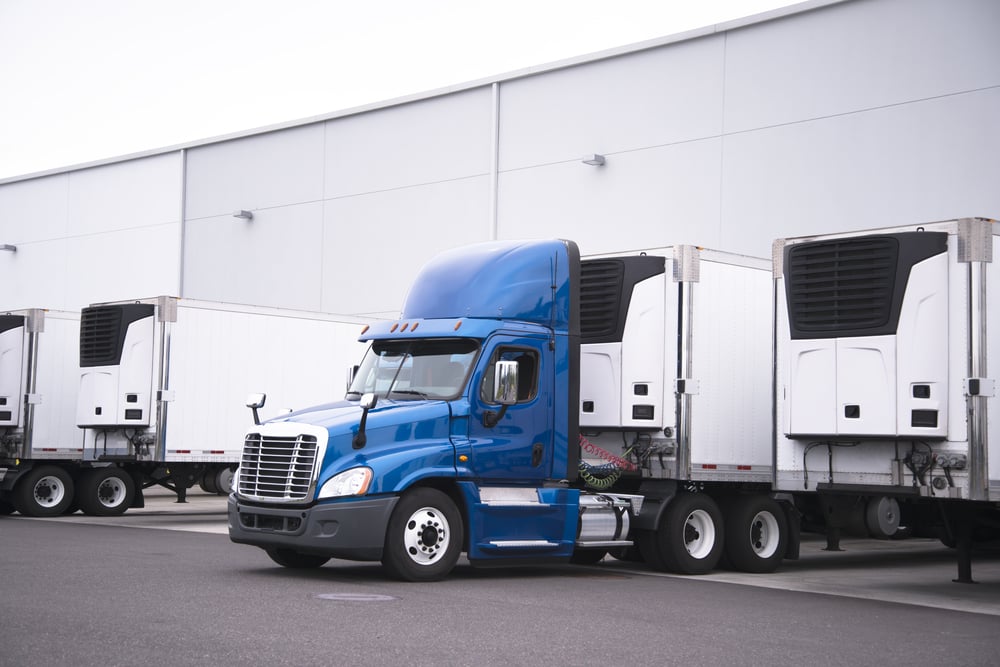
The Ultimate Guide to Cold Chain Shipping: Ensuring Temperature-Sensitive Shipments Stay Safe
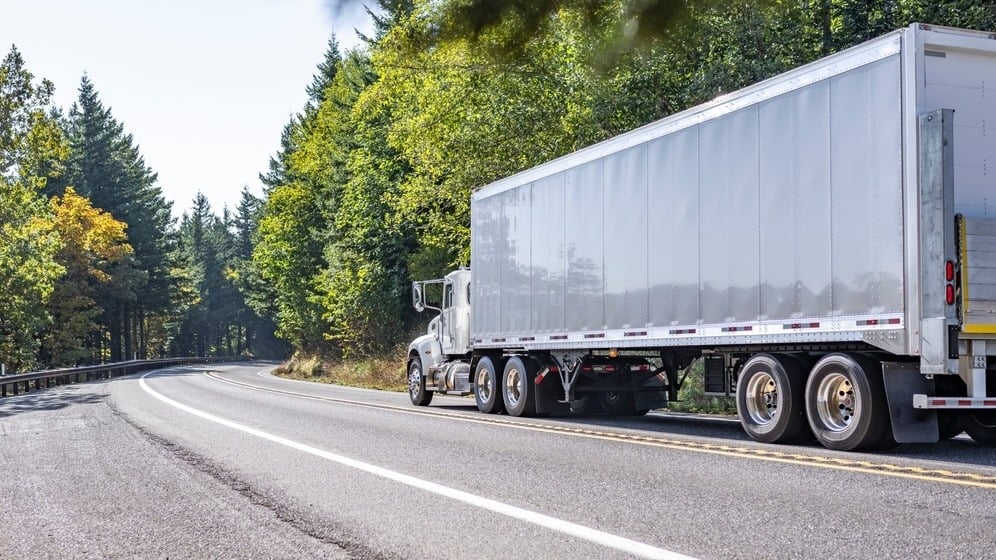
Refrigerated LTL Carriers: The Smartest Way for Cargo Shippers to Transport Temperature-Sensitive Freight
